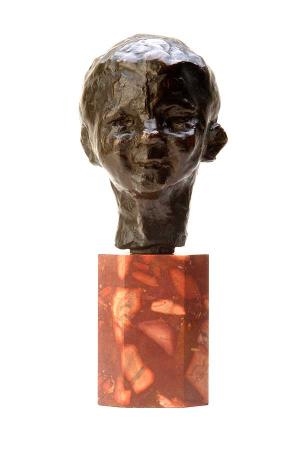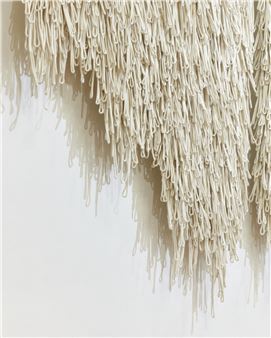Head to Head
The human head is the nexus of thought, emotion, and expression. Four of our five senses are located there. The importance of human head—regardless of size and shape—visually links the great variety of artworks in this exhibition, which range in date from 1907 (Tete d’enfant by Henri Matisse) to 1995 (Trophy Head by John Ahearn).
A number of the pieces are portraits of specific individuals and they present some interesting artistic linkages. For example, both William Zorach and Robert Laurent carved stone portraits of the prominent art dealer, Edith Halpert, who opened the influential Downtown Gallery in New York City in 1926 and represented both artists there. Three other works on view are by artists who studied under the same teacher, Jose de Creeft (not represented in the exhibition): Malvina Hoffman, Michael Lekakis, and Reuben Nakian. Despite their shared tutelage by de Creeft, their work differs markedly. Hoffman’s realistic Mattress Maker of 1928 elevates the subject and her routine role to a heroic level, while Nakian’s Ecstasy of 1947 conveys an intangible emotional state through relatively representational means. By contrast, Head # 2 by Lekakis is a casual portrait rendered in painted concrete and plaster.

Recommended for you
The human head is the nexus of thought, emotion, and expression. Four of our five senses are located there. The importance of human head—regardless of size and shape—visually links the great variety of artworks in this exhibition, which range in date from 1907 (Tete d’enfant by Henri Matisse) to 1995 (Trophy Head by John Ahearn).
A number of the pieces are portraits of specific individuals and they present some interesting artistic linkages. For example, both William Zorach and Robert Laurent carved stone portraits of the prominent art dealer, Edith Halpert, who opened the influential Downtown Gallery in New York City in 1926 and represented both artists there. Three other works on view are by artists who studied under the same teacher, Jose de Creeft (not represented in the exhibition): Malvina Hoffman, Michael Lekakis, and Reuben Nakian. Despite their shared tutelage by de Creeft, their work differs markedly. Hoffman’s realistic Mattress Maker of 1928 elevates the subject and her routine role to a heroic level, while Nakian’s Ecstasy of 1947 conveys an intangible emotional state through relatively representational means. By contrast, Head # 2 by Lekakis is a casual portrait rendered in painted concrete and plaster.
Artists on show
Contact details


 ARTISTS
ARTISTS















